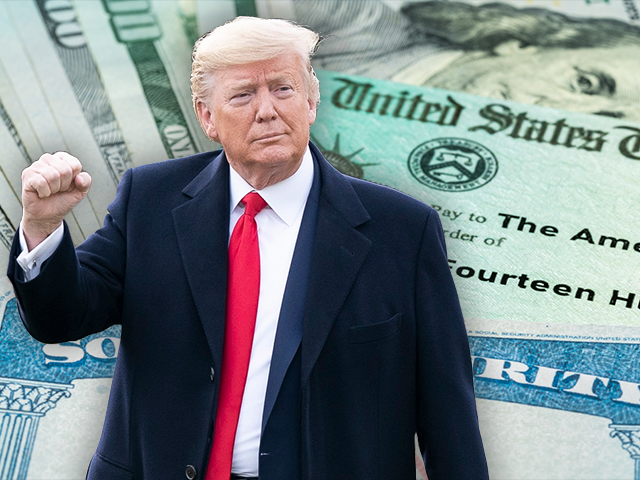A Brand New Tax Cut: Ending the Social Security Tax on Retirees
Donald Trump on Wednesday threw a monkey-wrench into the plans of Democrats to claim he wants to cut Social Security when he proposed ending federal taxes on the benefits of retirees.
This was an unexpected but very welcome development. The taxation of Social Security benefits has long needed an overhaul, but the recent explosion of inflation has highlighted the problems with the current system. And for the first time in living memory, we have a proposed Social Security reform that will actually help seniors pay their bills.
Social Security benefits were not taxed for the first fifty years. The idea to tax them came out of one of the most dangerous creatures ever to stalk our Republic—the bipartisan reform commission. Led by Alan Greenspan, the National Commission on Social Security Reform proposed in 1983 taxing around half of the benefits received by high-income retirees.
The amendments to the Social Security Act that were signed into law that year subjected half the benefits to federal income tax if a retirees income exceeded $25,000. For a joint filer, the threshold was set at $32,000.
This was a tax on a relatively small share of people receiving Social Security benefits. Back in 1983, the median household income was $24,550. So, the tax only applied to people earning an above average income. For people eligible to collect Social Security—many of whom would have been retired—the median income was even lower. At the time, the Social Security Administration estimated that the tax would only affect 10 percent of beneficiaries.
Inflation + Time = Taxation Without Representation
This was a tax, however, that was destined to expand without any politician having to support a tax hike on the elderly. That’s because the thresholds for taxing benefits were not indexed to inflation. So, as time went on and inflation worked its way through our economy, more and more seniors were pulled into the taxable bracket.
The median household income in 2022—the latest data available from the Census Bureau—was $74,580. But those tax thresholds have remained unchanged. So, the tax that once applied only to retirees with incomes above the national average now applies to retirees with incomes much lower than average. The Social Security Administration estimates that around 40 percent of beneficiaries are subject to taxes on their benefits.
In other words, a tax that was designed to apply to people earning a relatively high-income at an advanced age now applies to elderly people working part-time to make ends meet. What’s worse, is that this is a form of taxation without representation. No one voted for the tax increases. They just happened because of inflationary bracket creep.
Donald Trump’s proposal will put an end to this. Just by raising the idea of ending taxes on Social Security benefits, Trump has restored some democratic accountability around the issue. If Trump’s opponent wants to defend a tax on the benefits of a widow earning $28,000, that seems like a fine thing to discuss at a presidential debate.
At the very least, the tax on benefits should be rolled back to the one that Ronald Reagan signed into law. That would mean a significant rise in the thresholds so that once again only wealthier households were subject to the tax. And those thresholds should be indexed to inflation so that the bracket creep is not allowed to occur again.
The Fed Didn’t Push Back Against a September Cut
The Federal Reserve did not endorse the certainty financial markets have about a rate cut in September—but it also did not do much to push back against that certainty.
The Fed’s formal statement seemed to be a bit more hawkish than many investors thought.
“The Committee does not expect it will be appropriate to reduce the target range until it has gained greater confidence that inflation is moving sustainably toward two percent,” the Fed said.
That doesn’t sound like a Fed that is six weeks away from a cut. But in his statements during the press conference, Fed Chair Jerome Powell made it clear that a September cut is a possibility.
The Fed doesn’t like to shock the market. It almost never moves when the market is certain it will not and almost never fails to move when the market is certain it will. This is not so much because the Fed is fearful of upsetting markets but because officials move markets in the direction they intended to go.
So, if the Fed isn’t pushing back a market that is convinced there is going to be a cut, that’s a sign that the Fed also thinks there will be a cut.

COMMENTS
Please let us know if you're having issues with commenting.